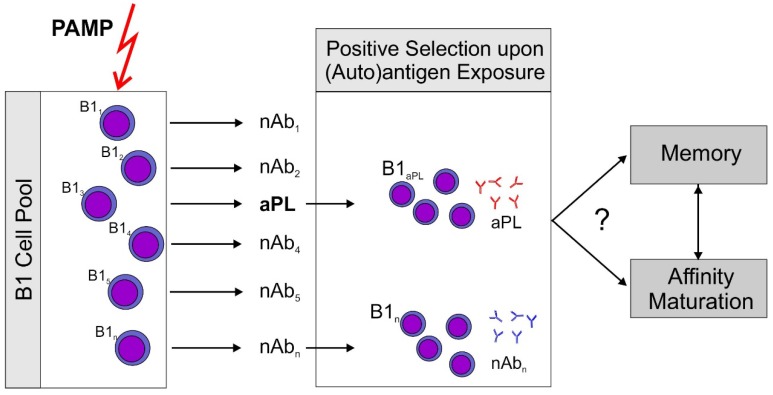Figure 1.
Proposed sequence of events leading to antiphospholipid antibodies (aPL). A non-specific stimulus by pathogen associated patterns (PAMP) which can activate pattern recognition receptors, e.g., toll-like receptors (TLR) stimulates an increase over basal antibody production by B1 cells. Subsequently, antigen producing B1 cell clones are positively selected by exposure to their (auto)antigen. This model could explain rapid aPL production induced by immunization of mice with an aPL. It should be noted that aPL themselves are able to sensitize immune cells to the action of ligands for TLR7, the receptor for single stranded RNA (ssRNA), by inducing TLR7 transcription and translocation to the endosome [21]. This could explain the role for aPL in this immunization scheme. Development of memory and antigen driven maturation have been described for B1 cells. However, there is only circumstantial evidence that this might occur with aPL producing clones.

